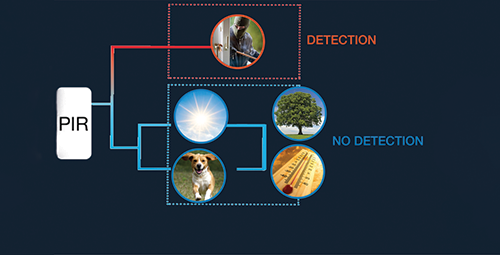
Unfortunately, we all know someone whose home or business has been robbed. Experiencing a break-in is a traumatic experience, which leaves a long-lasting impact on victims. It does not only affect them financially, but also mentally and emotionally.

The fact that someone intruded on your private sanctuary, where you have your loved ones and valuable belongings, is a feeling that stays with you long after the physical damage is repaired, but this has never stopped criminals from committing such crimes. Europol warns of a steady increase in reported burglaries in recent years. Estimates suggest that one burglary is committed every 1.5 minutes in the EU, with some member states registering 1000 burglaries daily.
Summer is a common season for break-in attempts, and vacant properties become a popular target for burglars who take advantage of people being away on holiday. Another frequent situation is for burglaries to happen while the occupants are at home, often due to the tendency to leave windows and patio doors open or leave valuables in the garden.
Security starts outside of the property
While indoor systems are essential for securing the interior of a building, they are unable to alert to an intrusion before the actual break-in has occurred. Outdoor intrusion detectors have been specifically designed to expand the security coverage beyond the confines of a building and to warn of anyone approaching as early as possible. Time, in an intrusion, is a critical factor, and early warning by outdoor detectors allows a quicker security response to prevent or minimise the impact of an intrusion. External sensors can be armed even when the occupants are home, which ensures safety and peace of mind when vulnerable entry points such as balcony doors and windows are open.
Outdoor detectors face many challenges due to environmental factors like wind or animals, weather conditions and temperature changes, among others. Adaptable detection technology is therefore needed externally for reliable detection without false alarms.
Not all external detectors are made equal
At OPTEX, the company aims to prevent intrusions, and it does so by developing robust outdoor intrusion detectors which form an essential part of a comprehensive security strategy for residential, commercial, or industrial properties. Years of experience manufacturing outdoor sensors have equipped its devices with unique algorithms and advanced technology and have positioned OPTEX as a market leader due to its reliability and extensive sensor range.
Its PIR sensors come with a bespoke logic called Super Multi-Dimensional Analysis (SMDA) that combines digital detection analytics with temperature compensation to maintain performance and prevent false alarms. This combination of technologies ensures that OPTEX PIRs have advanced sensitivity and precision, creating an ‘intelligent detection’ that recognises the sensor environment and distinguishes genuine intrusions.
The sensors use digital microprocessors with customised algorithms and analysis, which provide the detector with the intelligence to learn and adapt to its environment, filtering out false alarms and focusing on genuine intrusions. SMDA logic detectors consider five key analytics to validate a real alarm (see Figure 1).
OPTEX pioneered the development of outdoor sensors and has been accumulating data on factors that can cause sensors to operate erroneously. This data is the basis for its algorithm development, which focuses on building robustness against environmental noise and creating sensors capable of withstanding challenging outdoor conditions. Additionally, it actively seeks feedback from various sites where sensors are deployed worldwide. This invaluable information enables the company to raise detection standards and performance consistently.
For more information, contact OPTEX, [email protected], www.optex-europe.com
| Email: | [email protected] |
| www: | www.optex-europe.com |
| Articles: | More information and articles about OPTEX |
© Technews Publishing (Pty) Ltd. | All Rights Reserved.